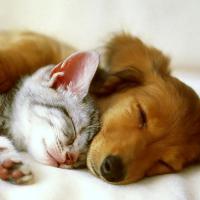The Benefits of Sleeping on the Job

When they’re not busy participating in cute videos, cats nap. Actually, in some of those videos, napping is exactly what they’re doing. Giraffes nap too. So, apparently, do walruses, and not always where you might predict. Of course infants nap, and nap time is a big part of kindergarten. But somehow, when we become adults, we nap infrequently, and not nearly as often as would be beneficial.
Considering the advantages of napping, I assumed that lots of companies would have found a way to allow napping during work hours. Then again, who am I kidding? When people are being pushed to work more and more hours, there’s no time to nap, even though a nap is exactly what would make those long hours more productive.
Some companies do have nap rooms, but they tend to be big companies with bucks to spare or small businesses with a spare closet. Even then, the shut-eye is often called a power nap, as in, snooze quick and get back to work.
Logistically, the absence of some sort of napping facility is understandable. You’d need a private space, a couch or cot, an alarm clock or timer, and some sort of sign-up process so people don’t barge in on other people’s naps. Still, this area is ripe for innovation.
Consider, for example, this napping desk. Or, in a crunch, simply crawling under your desk for a snooze. Even just sleeping at your desk is feasible if you can get comfortable, though this article strongly advises that you arrange yourself so as to look busy. (How many people could successfully nap at their desks in an open-plan office?)
While naps have numerous benefits, such as increased alertness, enhanced performance, and reduced mistakes and accidents, naps are not totally positive for everyone. Some people actually feel less rested after a nap. Some who nap during the day have difficulty sleeping at night. And some people can’t get back into the swing quickly enough after the nap, so while it may be a power nap, productivity suffers.
Maybe someday in the distant future, we will evolve to do what some birds and aquatic animals do: sleep with half the brain at a time. It’s called unihemispheric sleep, and one eye stays open while the other is closed. What a great system!

